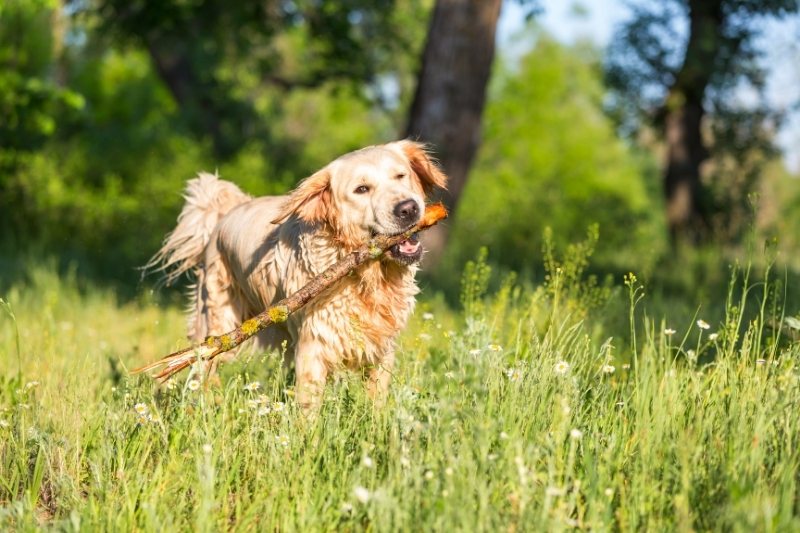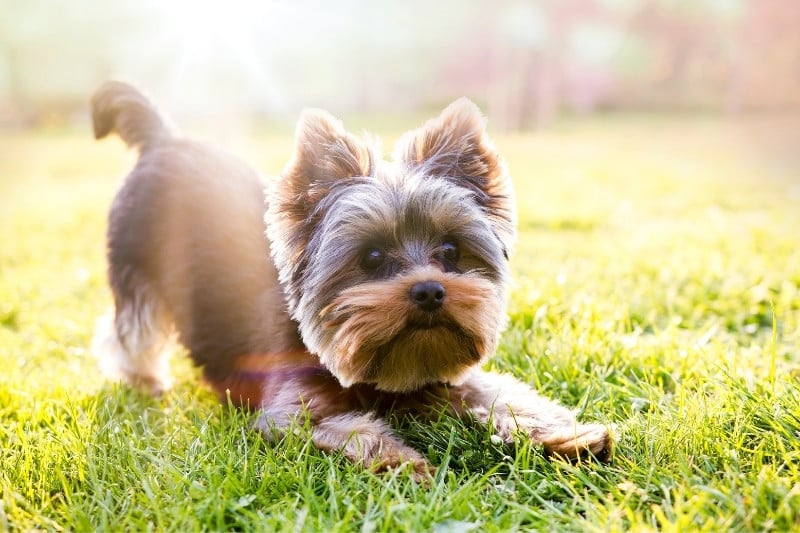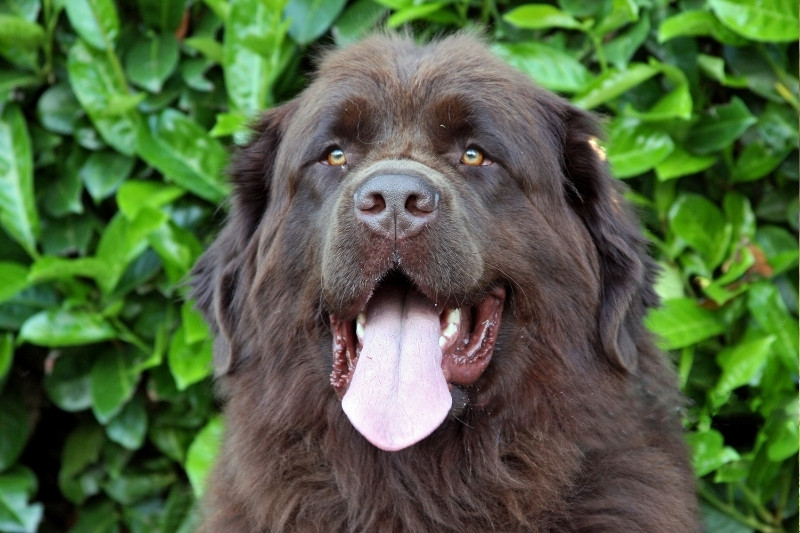9 Norwegian Dog Breeds (With Pictures!)

Norway is one of the happiest countries in the world to live in. A land where the sun never sets in summer, you can see wild polar bears, and search for the Northern lights – it’s a country on many people’s bucket lists.
But did you know there are also lots of Norwegian dog breeds? Of course, in a country that’s covered in snow for a large part of the year, you can expect some of them to be considered the best sled dogs around. But other breeds may just surprise you…
9 Norwegian Dogs for You to Adore!
When it comes to Norwegian pups, they generally fall into two groups. The first is the classic spitz-type dogs we associate with colder climates and the second is hunting scent hounds. They’re all amazing canines but as with any dog, you need to research the breed well before thinking of adoption.
Norwegian Elkhound

Who doesn’t want a dog that once sailed the seas with a Viking fleet? Of course, you do! The Norwegian Elkhound is a beautiful, spitz-type breed known for its stunning gray coat that can come in different shades.
Norwegian Elkhounds can do a little bit of everything when it comes to working. They’re amazing herders, watchdogs, protectors, and companions. They’re also used as hunters and one of their main breed qualities is that they can track elk for miles. They love to go explore and can have an independent streak. That’s why it’s not recommended to let them off leash whilst out in the woods as they’ll probably follow their nose and wander off.
As well as hard workers, Elkhounds are very affectionate and gentle souls. They love to be with their chosen humans and won’t mind curling up with you after a long day.
Norwegian Lundehund

The Norwegian Lundehund, just like the Norwegian Elkhound, is a recognized dog breed according to the American Kennel Club. They’re also the only dog breed in the world to hunt puffins! That’s thanks to where they were first bred – Vaeroy, a beautiful island to the North of the country.
These dogs are loyal, active, confident, and very energetic. They’re another spitz-type pup with a thick double coat to protect them from harsh weather, a tail that curves over their back, and triangular ears.
Although bold when on the hunt for puffins, Norwegian Lundehund are actually very sensitive and don’t respond well to loud noises or scolding. They do best with lots of positive reinforcement and early socialization.
Hygen Hound

The Hygen Hound is a breed that was accepted by the United Kennel Club in 2006, so it’s relatively new (to kennel clubs). They’re medium-sized dogs that can grow to be 55 pounds and have beautiful chestnut or brown-colored coats. They also often have white markings and black shading. They have a typical hound look with a defined muzzle and floppy ears.
As with other hounds, Hygen Hounds have lots of energy and any pet owner needs to take them out a couple of times a day. They’re built for endurance and can run for miles over snowy and icy terrain, so they’re the perfect companion for joggers and hikers.
Norwegian Buhund
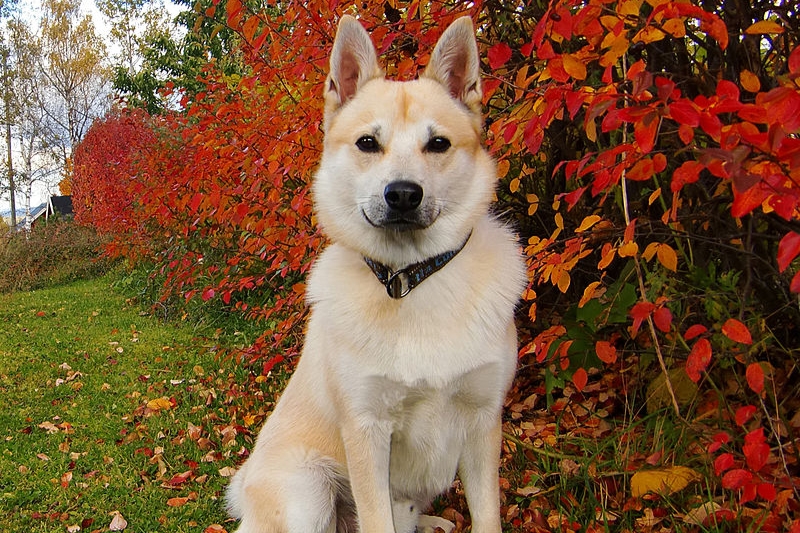
The Norwegian Buhund is another spitz breed loved by the Vikings and accepted by the AKC. They’re very energetic dogs that were originally bred for herding and guarding. They didn’t mind taking to the seas with their Viking owners either. Buhunds are smart and very observant which makes them great watchdogs too.
They can be in two contrasting colors: black and wheaten, and both a black mask and white markings are allowed. They have the classic spitz double coat which sheds mildly (in comparison with other spitz doggos).
Norwegian Buhunds are used to being out in the fields guarding and herding for hours at a time. When socialized early on, they can work well with other dogs, but they don’t mind a bit of solo work too. Because of their working nature, you can expect Norwegian Buhunds to be very active and need regular mental and physical exercise.
Halden Hound

In comparison to the pets of Vikings, the Halden Hound is a very new species that has only been around for a hundred years or so. As you can tell from their very cute looks, these dogs are a mix of Beagles and European hunting dogs.
Like other Norwegian breeds and hunting dogs, they’re very athletic with a solid build, floppy ears, curious and cute eyes, and long limbs. Like the Hygen Hound, they’re made for endurance and can hunt for hours on very difficult terrain.
Like Beagles, they get on well with other pups and don’t mind working as part of a team. They’re also great home pups and love cuddling up at the feet of their humans.
Dunker Dog

The Dunker Dog, also known as the Norwegian Hound, was first bred in the 1800s by Captain Wilhelm Dunker. He crossed the Russian Harlequin Hound with many different other local dog breeds to come up with the wonderful Norwegian Hound.
Dunker dogs are amazing scent hounds that have many classic characteristics such as large eyes and floppy ears. They’re athletic and confident hunters. They’re high energy so will need lots of toys to play with as well as regular exercise. These doggos are trusting and get along with almost anyone – so don’t employ them as a guard dog or watch dog!
These beautiful pups are usually fawn or light brown with distinctive harlequin markings which are often in the form of a saddle.
Black Norwegian Elkhound

The Black Norwegian Elkhound is a very striking dog that you can’t help but notice (if you’re lucky enough to see one). These Norwegian dogs look a lot like another on this list – and yes, they are very closely related. The Norwegian Elkhound! Towards the end of the 19th Century, the breed standard for Norwegian Elkhounds only specified gray canines. Which didn’t leave much room for these beautiful black dogs.
Some breeders loved pups with this color so much that they kept on breeding them regardless of the standard. They also had a different focus, to make the pups more agile, a little smaller, and with a higher prey drive.
Like the other Norwegian dog breeds classified as spitzes, they have strong bodies, pointy ears, curved tails, and a very dense, fluffy coat.
Greyster

When most of us think of a sled dog, especially a racing sled dog, we think of a spitz breed and usually a Husky. Not many of us think of a German Shorthaired Pointer. The Greyster, however, is an amazing sled dog that’s the wonderful mix of a German Shorthaired Pointer and a Greyhound! They’re one of the best Norwegian dog breeds for sprinting.
Greysters need a good amount of outdoor activity and exercise a day. Most Greysters are a mix of both their parent breeds, meaning they don’t need as much exercise as a Pointer but more than a Greyhound.
They’ll probably have a strong prey drive so should only be allowed to play in a fenced-in backyard. If they have a lot of Greyhound in them, they’ll also need to be kept on a leash on walks.
Eurohound
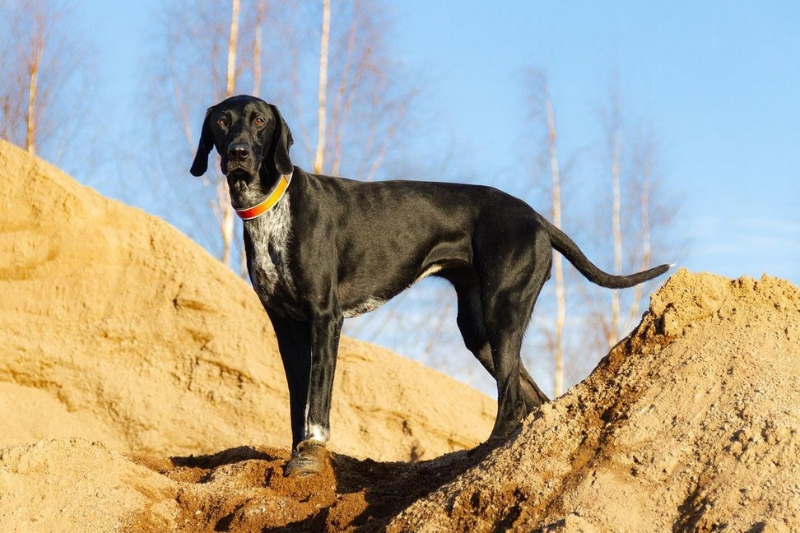
The Eurohound, like the Greyster, is a mixed breed rather than a purebred pup. They’re also called the Scandinavian Hound and are the beautiful mix of an Alaskan Husky and a German Shorthaired Pointer. The dogs were specifically bred to exhibit defined traits rather than for appearance.
A first-generation Eurohound (those that are 50% Husky and 50% Pointer) tends to have a smooth double coat that’s short and ideal for sprinting. If these dogs are further bred with a purebred Husky, they’ll likely have a much denser coat that’s more suited for long distances.
Eurohounds can be different colors and patterns but they’re often black with a white blaze (like that of a French Bulldog).
What Are The Most Popular Norwegian Dog Breeds?
That really depends on who you ask, where they are, and why they have their dog. Someone living in the US who wants a wonderful companion will have a different opinion from someone competing in a sled race.
Popularity could be judged based on whether the breeds are acknowledged by the AKC or not. If that’s the case, then the most popular Norwegian dog breeds in the US would be the Norwegian Elkhound, Norwegian Lundehund, and the Norwegian Buhund.
What Are The Rarest Norwegian Dogs?
This is why we had to use if in the above paragraph. Although popular enough to be included in the AKC’s list of dog breeds, the Norwegian Lundehund was actually registered as the least popular breed accepted by the AKC. They’re also very rare, which could contribute to this.
What Are the Origins of Norwegian Dog Breeds?
All of the breeds on this list differ somewhat when it comes to origin. One thing, however, seems to unite them (whether they’re ancient Viking companions or modern-day sprinters), they’re all prepared for harsh conditions. The unique geography and climate of Norway mean that all native dogs are ready for extremely cold weather and they have thick, double coats to keep them warm. It also means that they have to be athletic and be able to run over different terrains, sometimes for hours. This is also why many Norwegian dogs are sledders and hunters. They’re certainly not just bred to keep your lap warm!
Quite a few pups on this list are good all-round working dogs. They can hunt, guard, herd, and watch, and they’re also good companions. This comes from their ancient origins as Viking dogs that needed to do a little bit of everything. Farmers needed a pup that could help defend their land, as well as hunt and keep them warm.
Last Thoughts
It’s important that all dog owners find the right pup for them and where they live. Norwegian dog breeds are amazing, diverse, hard workers, and great companions. Most of the dogs on this list won’t do well in warm weather, so if you live somewhere very hot, you might want to think about a breed that’s suited to hotter climates.
If you live somewhere colder and can provide a pup with all the exercise and daily attention they need, then a Norwegian pup could be a great choice.
I’m Charlotte, a content and copywriter from the North of England and currently living in Berlin. Animals have always been a huge part of my life, so writing about dogs is a total pleasure! I love all kinds of dogs and their cheeky personalities, but I’d have to say Weimaraners are my favourite!





